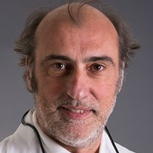Cutting-Edge Insights into Oral Health and Disease
A special issue of International Journal of Molecular Sciences (ISSN 1422-0067). This special issue belongs to the section "Molecular Pathology, Diagnostics, and Therapeutics".
Deadline for manuscript submissions: closed (30 July 2024) | Viewed by 2908
Special Issue Editor
Interests: oral health prevention; orthodontics;dentistry
Special Issues, Collections and Topics in MDPI journals
Special Issue Information
Dear Colleague,
Oral microbial communities are now seen as the fundamental etiological agent in oral diseases through their interface with host inflammatory responses. Oral infections occur frequently and often lead to chronic inflammations affecting the teeth (i.e., caries), the gingival tissues surrounding the teeth (i.e., gingivitis and endodontic lesions), and the tooth-supporting structures (i.e., periodontitis). Research in biology and microbiology is essential to promote improvements in molecule diagnosis and therapies in oral diseases.
Furthermore, it is critical to re-evaluate the molecule mechanisms behind the development and maintenance of oral health and to analyse the findings of studies on the anatomical, functional, and molecular changes in masticatory function. In order to sustain a long-term, healthy population, it is necessary to have a deeper knowledge of the biological and chemical processes of the muscles, salivary glands, and maxillofacial structure. This Special Issue has the aim of promoting research on the pathophysiology and microbiology of oral diseases, in particular masticatory muscle physiology, periodontal disease, and oral inflammatory diseases.
Prof. Dr. Luca Levrini
Guest Editor
Manuscript Submission Information
Manuscripts should be submitted online at www.mdpi.com by registering and logging in to this website. Once you are registered, click here to go to the submission form. Manuscripts can be submitted until the deadline. All submissions that pass pre-check are peer-reviewed. Accepted papers will be published continuously in the journal (as soon as accepted) and will be listed together on the special issue website. Research articles, review articles as well as short communications are invited. For planned papers, a title and short abstract (about 100 words) can be sent to the Editorial Office for announcement on this website.
Submitted manuscripts should not have been published previously, nor be under consideration for publication elsewhere (except conference proceedings papers). All manuscripts are thoroughly refereed through a single-blind peer-review process. A guide for authors and other relevant information for submission of manuscripts is available on the Instructions for Authors page. International Journal of Molecular Sciences is an international peer-reviewed open access semimonthly journal published by MDPI.
Please visit the Instructions for Authors page before submitting a manuscript. There is an Article Processing Charge (APC) for publication in this open access journal. For details about the APC please see here. Submitted papers should be well formatted and use good English. Authors may use MDPI's English editing service prior to publication or during author revisions.
Keywords
- oral diseases
- masticatory muscle
- periodontal disease
- inflammatory responses
Benefits of Publishing in a Special Issue
- Ease of navigation: Grouping papers by topic helps scholars navigate broad scope journals more efficiently.
- Greater discoverability: Special Issues support the reach and impact of scientific research. Articles in Special Issues are more discoverable and cited more frequently.
- Expansion of research network: Special Issues facilitate connections among authors, fostering scientific collaborations.
- External promotion: Articles in Special Issues are often promoted through the journal's social media, increasing their visibility.
- Reprint: MDPI Books provides the opportunity to republish successful Special Issues in book format, both online and in print.
Further information on MDPI's Special Issue policies can be found here.






